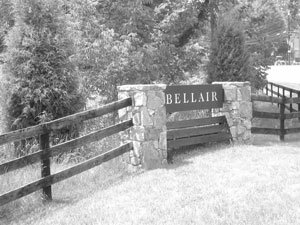Redistricting: Critics decry "segregation"
Diversity may have to take a back seat to capacity.
That's one way Albemarle County school officials defend the new redistricting plan which some are calling "segregation."
As the redistricting discussion got under way in the County Office Building Monday, October 10, assistant superintendent Pam Moran offered the board some advice: "The decision this board makes sends a message to the community."
Minutes later, the board voted to approve a plan one redistricting committee member describes as "riddled with hypocrisy."
The new plan throws out the recommendations a 16-member committee spent a year drafting. Instead, to the surprise and disappointment of committee member Michael Coppola, board members voted 6-1 to revert to a plan submitted by Superintendent Kevin Castner on July 14 that removes Northfields and Crozet from the redistricting.
The plan– which will re-route 479 mostly middle school students next fall– passed after numerous revisions by the committee and dissent among the neighborhoods affected. Opponents describe it as overly influenced by parents in well-heeled neighborhoods "such as Dunlora, Farmington, Ednam, and Bellair," who, they say, fought their way out of redistricting last spring. The earlier proposal would have channeled those neighborhoods from Murray, Henley, and Western Albemarle High School to the "New Southern" Elementary, Burley, and Monticello High.
As enrollment trends wax and wane, officials routinely plot redistribution of students among the county's 25 schools, and there has probably never been a plan parents and children have all agreed upon. But this year the debate has taken a divisive turn. Many parents, principals, and teachers, as well as the president of the local NAACP, M. Rick Turner, charge that the district is setting up a segregated system.
The plan also collides with the 2002 No Child Left Behind Act, a law drafted to close the educational achievement gap between white and minority students– differences shown to correlate strongly with income levels. Critics claim the new plan will widen the gap.
Coppola says Jack Jouett will soon have the highest free and reduced lunch rate in the county. He had previously favored sending his kids to Jouett, he says, but is now considering sending them to a private school. [The previous sentence has been edited for this online edition to correct an error in the printed original.–editor]
Opponents claim that the only ones who will benefit from the new plan are affluent neighborhoods to the west that lobbied the board throughout the decision-making process.
"Castner's plan panders to a handful of wealthy neighborhoods and parents who want their kids in western schools," says Coppola. The board "probably alienated a lot more people than the handful of parents they sought to please with this plan."
School Board member Brian Wheeler, who cast the lne dissenting vote, called aspects of Castner's plan "fatally flawed" and called for a revision that "would recognize Crozet's growth." Such a plan would redirect students to Jouett, not Henley.
"We learned nobody wants to leave their current school," Wheeler said. "Others came into the redistricting process thinking we could solve challenges of diversity. They learned that is rarely possible in a county like Albemarle."
Members of the school board stressed that Castner, who wasn't present at the meeting, wanted to eliminate "split-feeder" patterns that divide some elementary and middle school students as they move through the system.
But Burley still has a split, while Coppola says the plan has created a split for Cale.
Castner was also said to be interested in capacity and proximity.
Yet opponents say if capacity and proximity were the main factors, children from Beaumont Farm and Ivy Farm would find their way not to Henley or Sutherland, but to Jouett– or Burley, which Principal Bernard Hairston says he strongly supports.
Beaumont Farm and Ivy Farm lie only four miles from Jouett, yet students from those neighborhoods are slated for Henley, a middle school 14 miles away.
Hairston says he'd like to see the school board table the plan and "spot redistrict" where necessary. Walton and Sutherland are overcrowded, "so transfer the appropriate number to Jouett and Burley, which are under building capacity," he says.
Critics say taxpayers will not only be supporting segregation, but an unnecessary boost in bus mileage.
Parents have calculated that Farmington will add 50 miles per week to its itinerary, Bellair will log an extra 65 miles, Beaumont Farm, 90; Ingleside, 90; and Ivy Farms will top it off at 95 more gas-guzzling miles. That's 1,560 miles per month. Break it down by the tank, with school buses getting less than eight miles per gallon and gas prices hovering near $3/gallon, and the new plan's travel expenses come out to roughly $585 added to the monthly budget– or $7,020 per year.
Wheeler says a more equitable and economical redistricting plan was possible, one that would strengthen schools and create greater balance within the district in terms of income and race. It would include sending middle-school students now assigned to Henley and Sutherland to Burley and Jouett.
"This is one opportunity we shouldn't have passed up," said Wheeler.
